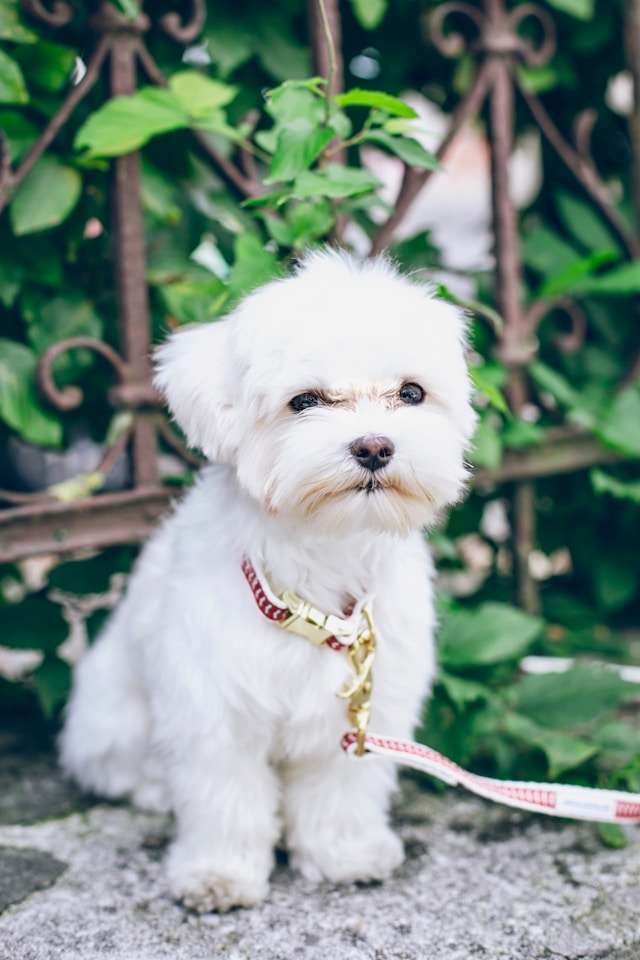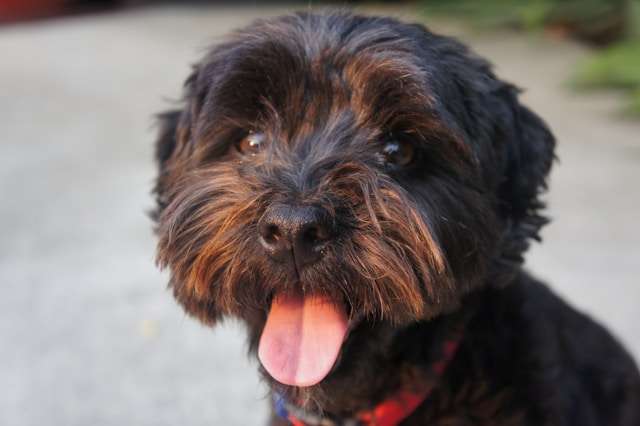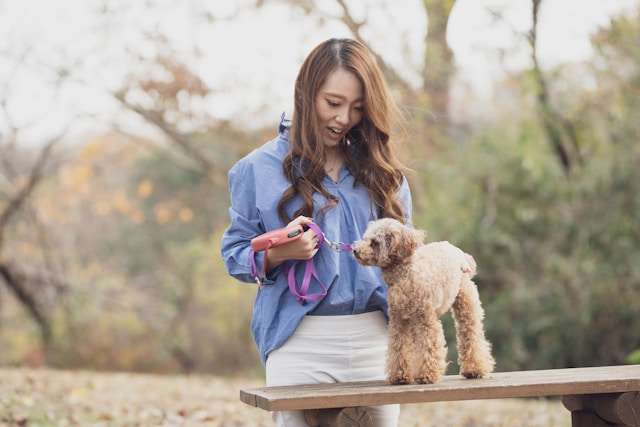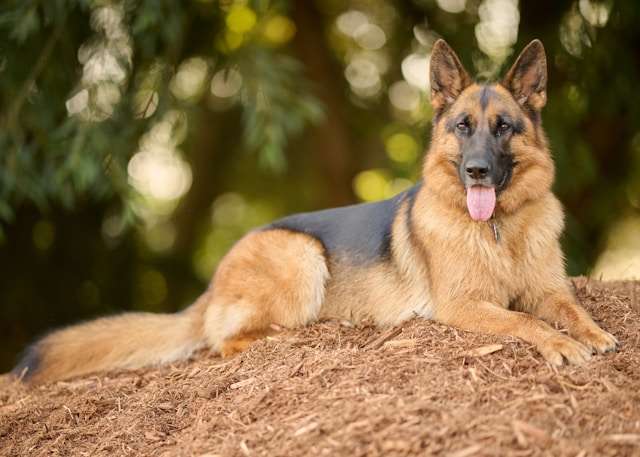10 Fascinating Facts About Akita Dogs You Need to Know

10 Fascinating Facts About Akita Dogs You Need to Know. The story of Hachiko, an Akita dog in 1920s Japan, engaged me deeply and showcased their remarkable nature. This faithful companion waited at a train station every day for nine years after his owner’s death. His unwavering loyalty made him a national symbol.
The legendary faithfulness represents just one aspect of what makes Akita dogs unique. Our experience with Japanese and American Akita varieties has revealed their unique characteristics. These dogs stand apart from other breeds with their distinctive personality traits and rich cultural heritage as Japan’s national treasure. Their magnificent presence continues to win hearts worldwide. This piece explores ten remarkable facts about Akitas that demonstrate their exceptional qualities as companions.
Table of Contents
Remarkable Loyalty Stories of Akitas
My research into the Akita dog breed has led me to countless stories of loyalty. These remarkable companions have shown a depth of devotion that’s hard to match. Let me share some extraordinary tales that show why Japanese Akita dogs are symbols of steadfast faithfulness.
The Tale of Hachiko and Its Effect
Hachiko’s story is the most potent example of an Akita dog’s loyalty. This golden-red Akita was born in 1923 near Odate City [1] and belonged to Professor Hidesaburō Ueno of Tokyo Imperial University. After the professor’s unexpected death, a daily routine of meeting his master at Shibuya Station became a fantastic display of devotion. Hachiko returned to the station for nine years, nine months, and fifteen days, waiting for his master’s return [1].
The commuters who saw this daily vigil brought food and treats to help him [2]. Japan’s largest newspaper published articles about his loyalty in 1932 [3], and the story captured national attention. The dog’s devotion made such an impression that officials erected a bronze statue at Shibuya Station in 1934 while Hachiko was still alive [1].
Modern-Day Loyalty Examples
Contemporary Akita companions show similar dedication. I’ve documented many cases where these dogs show extraordinary protective instincts toward their families. An American Akita named Haga serves as a touching example. His owner said he would “sacrifice himself to protect our home” [4].
Understanding Their Devotion
The Akita dog’s personality combines unique traits that explain their exceptional loyalty:
- Their bond with owners runs unusually deep and shows a devotion that’s “unlike any other” [4]
- Natural guardian instincts run deep in their DNA, making them protective of their family [5]
- These dogs might seem reserved with strangers but show remarkable gentleness and dedication to their chosen family [6]
The breed’s exceptional quality is showing its loyalty through protection and companionship. One expert puts it well: “The way Akitas express their devotion isn’t just about guarding; it’s about genuine affection and an unbreakable bond with their family” [5]. This mix of strength and tenderness makes the Akita Japanese dog a uniquely devoted companion.
Hidden Communication Signals
My years of working with the Akita dog breed led me to discover their secret language. These clever animals communicate subtly and sophisticatedly, which sets them apart from other canine companions.
Unique Vocalizations and Their Meanings
Many people think Akita Japanese dogs are quiet, but my observations show they have a rich vocal range. They speak less often than other breeds [7], yet each sound carries weight and purpose. Their communication includes everything from powerful barks to gentle whimpers; each sound has meaning [7].
The sort of thing I love about these dogs is their unique way of “talking,” much as we see with Huskies [8]. My research shows their sounds reflect different emotional states:
- Alert Barking: Deep, powerful sounds when sensing potential threats [7]
- Greeting Sounds: Soft whimpers or murmurs when welcoming family
- Warning Signals: Low growls or deep barks when protecting territory
- Attention Seeking: Subtle whines or gentle “talking” sounds
Body Language Specifics
The Akita dog American variety shows remarkably nuanced body language. These dogs communicate through multiple channels, including visual signals and body positions [9]. My observations revealed several vital signals:
Their tail position tells a straightforward story—a higher tail shows confidence, while a lower tail indicates unease or fear [10]. Their eyes speak volumes, too—a relaxed gaze shows comfort, but seeing the whites of their eyes (whale eye) points to anxiety or stress [10].
Emotional Expression Methods
The Akita dog’s personality reveals remarkable intuition about their family’s feelings [11]. They show their emotions through several subtle signals:
- Stress Signals: Yawning or nose-licking indicates anxiety [9]
- Contentment: Soft eyes and relaxed body posture
- Alertness: Raised hackles and forward weight shift
- Affection: Seeking proximity to their favorite human [11]
Japanese Akita dogs stand out because they communicate with precision. Each signal serves a purpose, making their communication clear and meaningful [7].
Extraordinary Protective Instincts
My extensive work with protective breeds has shown me that the Akita dog breed has some of the most remarkable guardian instincts I’ve seen. Their protective nature runs deep in their royal heritage, making them exceptional watchdogs with complex protective behaviors.
Natural Guardian Behaviors
The Akita Japanese dog’s protective instincts come from their ancient history as hunting dogs and guardians of Japanese royalty [12]. These natural guarding behaviors show up in several ways:
- Sharp territorial awareness and alertness
- Deep protective instincts toward family members
- Natural wariness of strangers
- Exceptional skill at spotting unusual situations
The Akita dog’s personality amazes me with its ability to remain dignified and brave, whether resting or playing [12].
Family Protection Patterns
The Akita dog American variety displays unique protection patterns. These dogs build deep bonds with their families and show steadfast loyalty when protecting their loved ones [13]. They naturally guard their home and stay alert to anything unusual [13].
Their way of showing protection stands out. Instead of apparent aggressive behavior, they prefer to keep a quiet, watchful eye on things. My advice to potential owners always includes a reminder that these dogs need proper introductions to warm up to strangers [14].
Balancing Protection with Socialization
Experience has taught me that finding the right balance between protective instincts and proper socialization is vital. The Akita dog breed needs lots of exposure to friendly people early to learn what’s normal and suspicious [15].
A successful approach to managing an Akita’s protective nature needs:
- Early and consistent socialization
- Firm but positive training approaches
- Clear boundaries and expectations
- Regular exposure to different situations
These dogs must learn to accept many different types of people without seeing them as threats [6]. Training helps Akitas grow into confident, pleasant, well-rounded dogs [14].
Working with these magnificent creatures brings great rewards, especially when you see them keep their natural protective instincts while becoming great family members. Potential owners should remember that reaching this balance takes dedication and a deep understanding of the breed’s complex nature.
Unexpected Personality Quirks
My years of breeding and training dogs have taught me that the Akita dog breed has some of the most intriguing personality quirks I’ve seen. These unexpected traits catch even experienced dog owners off guard and make these magnificent creatures unique companions.
Cat-Like Cleanliness Habits
The Akita Japanese dog’s almost obsessive cleanliness amazes me. They show self-grooming behaviors that remind me of cats [16]. I’ve seen these meticulous habits play out in several ways:
- Daily self-grooming routines
- Naturally odorless coat maintenance
- Instinctive cleanliness that makes housebreaking easier
- Regular coat-cleaning through ground-rubbing behaviors
Their natural cleanliness makes them ideal indoor companions. They rarely need baths unless they get filthy [16].
Unique Play Behaviors
The Akita dog American variety’s play patterns stand out from other breeds. They blend independence with selective interaction [17]. I love their calculated approach to play – adult Akitas save their playful side for private moments with family [18].
These intelligent dogs choose their play carefully and often show “purposeful play.” They can be picky about their toys and might get possessive over favorites [19]. Their selective nature shows how they interact—they value meaningful engagement over simple activity.
Individual Personality Traits
The Japanese Akita dog’s distinct personalities make them stand apart. Each one grows into a truly unique character [14]. Here are some fascinating traits I’ve noticed:
Their emotional expression catches my attention – they communicate through moans, groans, and grumbles when unhappy [14]. They develop their “behavior pain points” – specific triggers that might cause them to voice their displeasure [14].
The Akita dog personality reveals impressive depth in environmental interactions. They switch from cautious and reserved to overwhelming without notice [14]. Their shrewd minds and independent thinking often surprise their owners [14].
These dogs think before they act, but their actions come suddenly and decisively [14]. Their thoughtful nature, combined with their quirks, makes every Akita unique.
Special Care Requirements
My decades as a breed specialist taught me that the Akita dog breed needs thoughtful care to thrive. These magnificent creatures have specific needs, and once you meet these needs properly, your Akita’s true personality will shine through.
Climate Adaptation Needs
My work with Japanese and Akita dogs American varieties has shown their remarkable temperature adaptability. These dogs naturally handle temperatures as low as -30°F in cold weather [20]. They adapt well to warmer climates up to 86°F/30°C [20]. The sweet spot for their comfort lies between 24 to 30 degrees Celsius [20].
Their double coat makes them prone to overheating, which worries me. Warning signs include excessive panting, glazed eyes, or a dry nose [20]. Akitas should stay indoors during peak heat hours in warmer climates and schedule their activities during more excellent parts of the day.
Exercise and Mental Stimulation
The Akita dog personality needs a balanced approach to physical activity. These dogs need 1-2 hours of exercise daily [21]. Multiple sessions work best, in my experience. Here are activities that work well:
- Daily brisk walks or jogs
- Interactive play sessions
- Swimming (when weather permits)
- Agility training
- Problem-solving games
Mental stimulation plays a vital role. Puzzle toys and training exercises have shown remarkable results [22]. These activities keep them from getting bored and maintain their sharp minds.
Grooming Secrets
Akitas’ coat care needs dedication, as I’ve learned from grooming countless dogs. Their double coat needs regular attention, though not extensive grooming. Here’s my proven grooming routine:
- Brush the coat at least weekly [6]
- Increase brushing frequency during bi-annual shedding periods [6]
- Bathe every 2-3 months to maintain coat health [23]
- Trim nails regularly to prevent discomfort [6]
- Brush teeth three times weekly minimum [24]
I love their natural cleanliness—they groom themselves almost like cats. However, their bi-annual “coat blow” needs substantially more frequent brushing, as their undercoat sheds heavily in clumps [6].
My years with this breed have taught me that good care goes beyond routines. Understanding and adapting to their unique needs matters most. With consistent care, these magnificent dogs become the regal companions they’re meant to be.
Cultural Impact Around the World
The magnificent Akita dog breed has left an incredible mark on global culture. These fantastic creatures have grown beyond their Japanese roots to touch societies worldwide.
Influence on Modern Dog Breeds
The Akita Japanese dog’s genetic heritage has shaped many other breeds today. The Akitainu Hozonkai (AKIHO), a 96-year-old preservation society, changed everything for the breed in 1927 [25]. I love these dogs’ genetic connection to Japanese breeds like the Shiba Inu, Kishu Ken, and Kai Ken [26]. This relationship guides breeding standards and helps preserve many Asian dog breeds.
Role in Different Societies
The Akita dog personality holds a fantastic place in Japanese culture. Japanese authorities recognize them as one of seven National Monument breeds [27]. Japanese families have shared some beautiful traditions with me about these dogs:
- New parents receive small Akita statues to bring health, happiness, and longevity to their babies [27]
- Friends give Akita statues to sick people to help them recover [27]
- These dogs take part in New Year celebrations while wearing traditional clothes [28]
American servicemen brought these dogs home after World War II because they loved their intelligence and adaptability [27]. This cultural exchange created the Akita dog American variety we see today.
Popular Culture Representations
The Japanese Akita dog’s presence in the media has grown significantly over time. Helen Keller’s first Akita, Kamikaze-go, arrived in 1937 [29]. Her second dog, Kenzan-go, Kamikaze’s brother, made Americans love the breed [29].
These dogs keep growing in cultural importance through:
- Traditional celebrations at the Kanto Matsuri festival in Akita Prefecture [28]
- The 56-year-old Akita Dog Museum showcases its story through documents, photos, and artifacts [30]
- Modern media that shows their loyalty and strength [28]
These dogs stand out as symbols of good luck and protection. They manage to keep their noble image while fitting into different cultures worldwide. Their role has evolved from working dogs to beloved family members and cultural symbols [28].
Conclusion
My experience with Akitas has taught me that these remarkable dogs stand out from other breeds. They blend steadfast loyalty with sophisticated communication and carry themselves with noble dignity. Their story runs deep, from Japan’s ancient traditions to homes around the world today, which shows how well they adapt and stay relevant.
These magnificent dogs need devoted care to thrive both physically and emotionally. The joy of life with an Akita makes the extra effort worthwhile. Their cat-like cleanliness, protective instincts, and strong family bonds make them exceptional companions when matched with the right owners.
The things I love about Akitas explain why people from different cultures and generations connect with them deeply. Their legacy lives on—from Hachiko’s famous loyalty to their current role as family guardians. Though they might not fit every home, people who meet these dogs’ unique needs will find a loyal, dignified, and remarkable friend.
FAQs
- What makes Akitas unique among dog breeds? Akitas are notable for several reasons. They are known for their unwavering loyalty, dignified demeanor, and courage. As ancient Japanese dogs, they have a rich cultural heritage and are considered national treasures in Japan. Akitas are also recognized for their intelligence, strong protective instincts, and unique physical features like webbed toes, which aided them in their original hunting roles.
- How did Akitas become popular outside of Japan? Akitas gained international recognition primarily due to two factors. First, Helen Keller is credited with introducing Akitas to America after receiving one as a gift during her visit to Japan in 1937. Second, American servicemen stationed in Japan after World War II became enamored with the breed and brought Akitas back to the United States, contributing to their popularity in the West.
- What are some distinctive traits of Akita dogs? Akitas possesses several unique characteristics. They are known for their cat-like cleanliness, often grooming themselves. They have a complex communication style, using various vocalizations and body language signals. Akitas are also recognized for their strong protective instincts, deep loyalty to their families, and a dignified, sometimes aloof demeanor with strangers.
- How much exercise does Akitas require? Akitas typically needs 1-2 hours of exercise daily. This can be divided into multiple sessions, including brisk walks, jogging, interactive play, and mental stimulation exercises. While they have moderate exercise needs, balancing physical activity with mental engagement is essential to keep them healthy and content.
- Are Akitas good family dogs? Akitas can make excellent family dogs for suitable households. They are loyal and protective and form strong bonds with their family members. However, their strong personalities and protective instincts require proper training, socialization, and understanding of their needs. They may not be suitable for families with very young children or other pets due to their dominant nature and potential for same-sex aggression.
- How do Akitas handle different climates? Akitas are remarkably adaptable to various climates. They can withstand temperatures as low as -30°F in cold weather and adapt to warmer climates up to 86°F (30°C). However, they are most comfortable in mild temperatures between 24 to 30 degrees Celsius. Special care should be taken in warmer weather to prevent overheating due to their thick double coat.
- What kind of grooming do Akitas need? Despite their thick coat, Akitas require relatively low maintenance. They require weekly brushing, which should be increased during their bi-annual shedding periods. Bathing every 2-3 months is usually sufficient. Regular nail trimming and teeth brushing are essential to their grooming routine. Their natural cleanliness often means they need fewer baths than other breeds.
- How intelligent are Akitas? Akitas are brilliant dogs. They possess a keen mind and are capable of independent thinking and problem-solving. This intelligence, combined with their sometimes stubborn nature, means they require consistent, positive training methods. Their intelligent and observant nature makes them excellent watchdogs, but they also need mental stimulation to prevent boredom.
Best Dog Food For Akitas
References
[1] – https://japandaily.jp/hachiko-incredible-story-loyalty-love-friendship-5075/
[2] – https://en.wikipedia.org/wiki/Hachikō
[3] – https://pethelpful.com/dogs/Akita-Inu-the-Story-of-Hachiko-the-loyal-Akita-dog
[4] – https://theakitalife.com/are-akitas-good-with-other-dogs/
[5] – https://vetplayas.com/the-akita-dog-a-loyal-guardian-with-a-rich-heritage/
[6] – https://www.akc.org/dog-breeds/akita/
[7] – https://www.natural-akita.com/do-akitas-bark-a-lot/
[8] – https://www.reddit.com/r/akita/comments/vt36fq/do_akitastalk/
[9] – https://vcahospitals.com/know-your-pet/canine-communication—interpreting-dog-language
[10] – https://www.akc.org/expert-advice/advice/how-to-read-dog-body-language/
[11] – https://iheartdogs.com/signs-you-are-your-akitas-favorite-human/
[12] – https://www.orvis.com/akita.html?srsltid=AfmBOopKkmn9voCYAX1ySJgcNoQHDhAXxdYHk-iHgU6UO0YhYWSR2vbl
[13] – https://www.dogster.com/lifestyle/is-an-akita-a-good-guard-dog
[14] – https://theakitainu.com/akita-temperament-expected-behavior/
[15] – https://wagwalking.com/training/train-an-akita-to-be-a-guard-dog
[16] – https://www.dogster.com/lifestyle/akita-facts
[17] – https://wagwalking.com/activity/activities-for-akitas
[18] – https://www.britannica.com/animal/Akita-dog
[19] – https://www.pawlicy.com/blog/akita-dog-breed/
[20] – https://akitaguru.com/suitable-weather-for-akita-dogs/
[21] – https://www.dogster.com/dog-health-care/how-much-exercise-do-akitas-need
[22] – https://www.akc.org/expert-advice/training/fun-cognitive-training-games-for-dogs/
[23] – https://www.dogster.com/dog-health-care/how-to-groom-an-akita
[24] – https://www.vidavetcare.com/dog-breed/akita/
[25] – https://akitas.org/the-akita-breed/akita-breed-history/
[26] – https://www.akitaclub.org/akita-genetics/
[27] – https://www.akitaclub.org/breed-history/
[28] – https://www.natural-akita.com/akita-history/
[29] – https://theakitalife.com/celebrities-with-akitas/
[30] – https://en.wikipedia.org/wiki/Akita_(dog_breed)







11 Comments